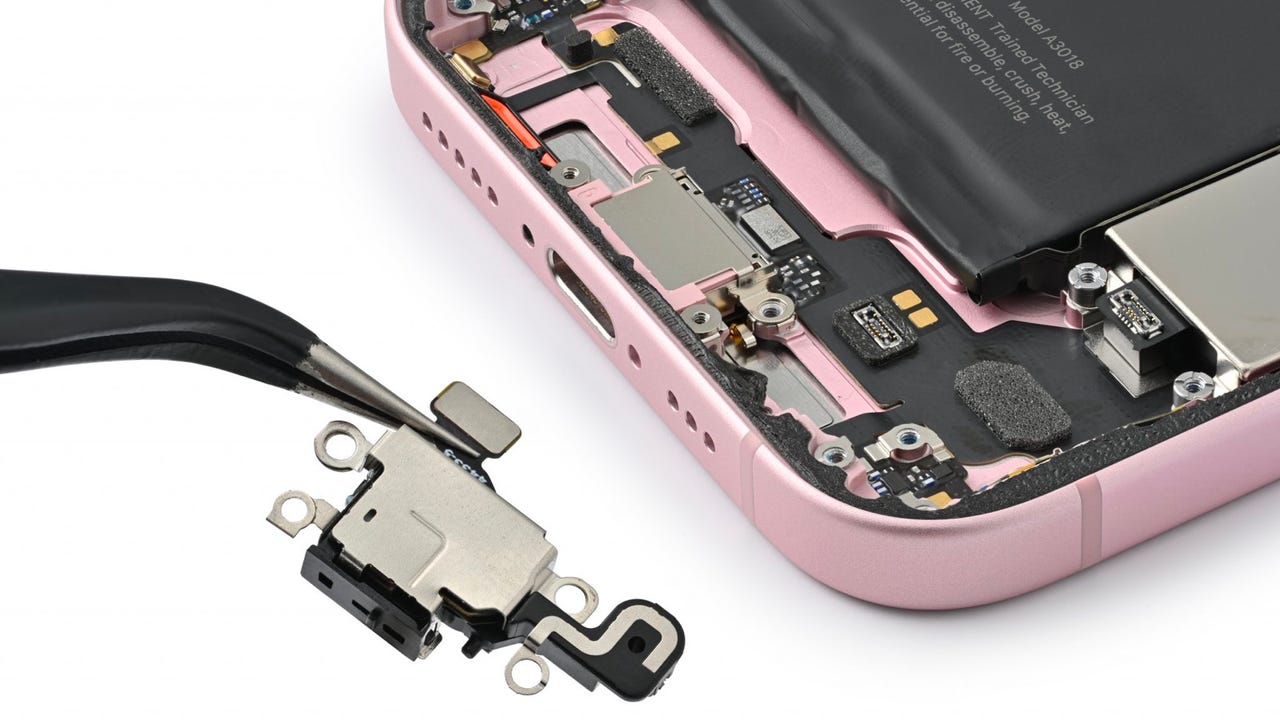
































The USB-C port assembly is one of the few parts that can be replaced on the iPhone without "parts pairing" DRM causing the user problems.
iFixit/Apple may have talked about repairability during the iPhone 15 launch event, but -- according to repair specialists iFixit -- repairability is being held back by Apple wanting to stuff DRM (Digital Rights Management) into parts, making swapping parts a huge hassle.
It's odd for Apple to talk about repairability. But the tweak in the chassis design of the iPhone 15 got a mention.
"There is also a new internal chassis architecture that makes iPhone more repairable, thanks to a new structural frame that allows the back glass to be easily replaced."
So, Apple wants you to repair your iPhone, right?
Also: Battery bad after installing iOS 17? Try these 7 tips
Well...
iFixit took a look at the new iPhone and discovered a few things.
First, that new redesign of the chassis architecture might make the back glass more repairable, but according to iFixit, that redesign comes at a big cost: It makes replacing the battery riskier.
"This inverted chassis arrangement makes critical repairs like battery swaps slightly riskier than on the [iPhone] 14," writes Kyle Wiens, CEO of iFixit, "because you're removing the expensive, fragile display rather than an inert sheet of glass."
The problem arises from how the repairs are performed: In order to break the adhesive that holds the iPhone together -and makes it water-resistant -you have to apply heat and then pry. Prying on an inert bit of glass is a lot safer than prying on the display.
But there's a bigger problem: the DRM used by Apple for "parts pairing."
Last year, the iFixit team discovered that you couldn't swap the front camera between two iPhones because the camera module was "paired" to the mainboard of the iPhone, meaning it couldn't be swapped by anyone outside of Apple or its authorized repair network. iFixit assumed that this was a bug, and that Apple would address this issue to make repairs easier.
Also:The best VPN services for iPhone and iPad (yes, you need to use one)
Since then, iFixit has been buying iPhones, taking them apart, and swapping parts around to see what works and what doesn't.
The company's conclusion is that this camera swap restriction wasn't a bug. Rather than address the issue, Apple has gone on to add "parts pairing" DRM to a whole host of other parts.
On the iPhone 15, the majority of the replaceable components are paired to the mainboard. While some parts -such as the wireless charging coil or the front camera array -refuse to work at all when swapped, other parts -for example, the battery or main camera -can be swapped but the owner is left with a warning displayed on the Settings app on the iPhone.
If you find yourself needing to swap the mainboard on an iPhone, then all the other parts locked to the old mainboard will start complaining.
In fact, the only four components that can be replaced on the iPhone 15 without any impact on functionality are the taptic vibration engine, the earpiece speaker, the main speaker, and the USB-C port assembly.
Also: Buying an iPhone 15 but still want your Lightning port? Apple's got a dongle for you
Wiens says this is wrong: "A part installed in a phone should just work. Software shouldn't be an obstacle to harvesting parts, or using aftermarket parts for that matter. The entire economy of reuse depends on interoperability, from local repair shops to large-scale refurbishers to recyclers."
 Tags quentes :
Tecnologia
Smartphones
Tags quentes :
Tecnologia
Smartphones